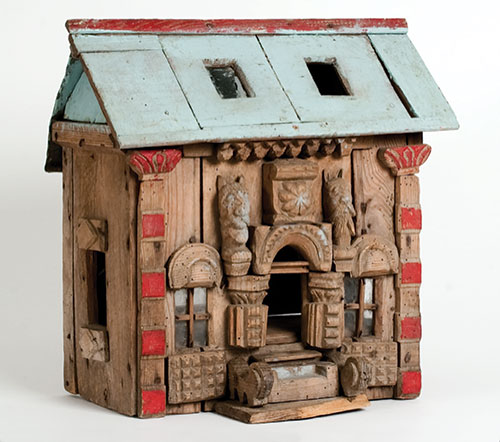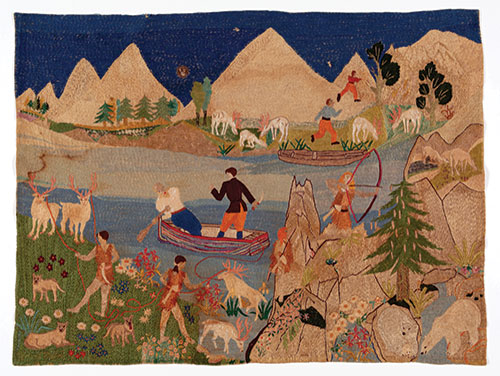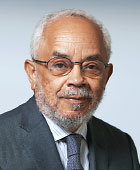In the small, almost hidden American Folk Art Museum on the Upper West Side of Manhattan, I recently attended a special exhibition focused on “Francesc (François) Tosquelles: Avant-Garde Psychiatry and the Birth of Art Brut.” After the museum visit, I pursued other reading to sharpen my image of Tosquelles and better understand the context in which he had operated. His name has certainly attracted interest in the last decade or so. In an article in Current Events in 2021, the University of Barcelona’s Joana Masó called Tosquelles a “transverse heterodox,” where many pathways meet. Masó noted some of those pathways: medicine, psychoanalysis, theater, poetry, cinema, and politics.
Francesc Tosquelles was born on August 22, 1912, in the Catalonia region of Spain. He studied medicine and psychiatry at the University of Barcelona and trained in psychoanalysis. During the Spanish Civil War, he served as psychiatric head of the Republican army. He was among thousands of civilians and military who sought refuge in the south of France during 1939. Wishing to deal harshly with these unwelcome socialists and anarchists, French authorities set up a labor-camp system for them. Tosquelles spent several months at the Septfonds camp, where he built a psychiatry unit based on therapeutic principles that he had developed while treating combatants on the front lines of the Spanish Civil War.
In early 1940, he was recruited to work at the psychiatric hospital in nearby Saint-Alban-sur-Limagnole, an isolated facility in the French department of Lozère. He worked there until 1962, developing a psychiatric practice that earned him praise, especially in France and Spain, regarding institutional psychiatry and its connection to art.
War and Psychopathology
The American Folk Art Museum exhibition’s curators suggested that Tosquelles was influenced by his experiences in the Spanish conflict, his time at Septfonds, and living in France during World War II. They maintained that, in Tosquelles’ view, war conditions had a significant effect on patients and the hospital itself. The collaborationist French Vichy government participated in the labeling of psychiatric populations as undesirable, which helped bring about some of Tosquelles’ creative changes and also led to the use of Saint-Alban in support of members of the French Resistance and individuals hiding from the Nazis.
Tosquelles experimented with interventions intended to impact medico-therapeutic, political, and sociocultural spheres. In today’s terms, he saw the needs of individual patients while also grasping the necessity of making changes at the organizational-practice level of the hospital. This meant changes in attitudes and postures of hospital personnel and administrators. It was no accident, then, that the conflict in Spain, which connected itself so effortlessly to events elsewhere in Europe and concretely in France, would have had such an effect on Tosquelles. War, and specifically fascism, was a root cause of human suffering and displacement, produced alienation of human beings from one another and from their social environment, and caused different forms of psychopathology.
A Path to Rehabilitation
Examples of new changes that came to Saint-Alban were training of caretakers and nuns in basic psychiatry, establishment of non-hierarchical relations among patients, medical staff, and neighbors from the village, and encouragement of patients’ creativity. Other changes included freer movement between town and hospital, produced by the destruction of the hospital’s walls, and permission for patients to engage in paid employment in the village. Thus, as Annikka Olsen noted in her critique of the exhibition on the Artnet website, patients were included in daily activities such as maintaining the hospital. They also had access to a library, cinema, and art workshops, in addition to use of a space where different types of celebrations, plays, and dances were held. These composite changes became known as institutional psychotherapy.
Writing about the exhibition in The New York Times, Travis Diehl reminded us that the art collector Jean Dubuffet visited Saint-Alban in 1945 seeking examples of the art produced by the hospital’s patients. Dubuffet had previously seen some of the works in Paris and was interested in building a collection of this “art brut”—the work of patients who had not been contaminated by formal art training. Saint-Alban had conserved the work of several of its resident artists, such as Auguste Forestier and Marguerite Sirvins. Dubuffet was committed to stripping this art of an earlier stigmatizing label promoted by some psychiatric hospitals: “psychopathological art.” That label suggested a linkage between artistic styles and certain psychiatric conditions.
Not surprisingly, Tosquelles was more interested in patients’ art as a path to rehabilitation and readaptation to a social reality that facilitated healing. The debate also continued concerning the ownership and meaning of this form of work product that took on economic value through individuals like Dubuffet. I can barely imagine the debates provoked by Tosquelles, a psychoanalyst and intellectual who interacted with many visitors to Saint-Alban, such as the Surrealist poet Paul Éluard and the French psychoanalyst Frantz Fanon. Those discussions must have been something to behold. The integration of village, hospital, literary and art movements, psychoanalysis, and war was never part of my lived experience. ■



